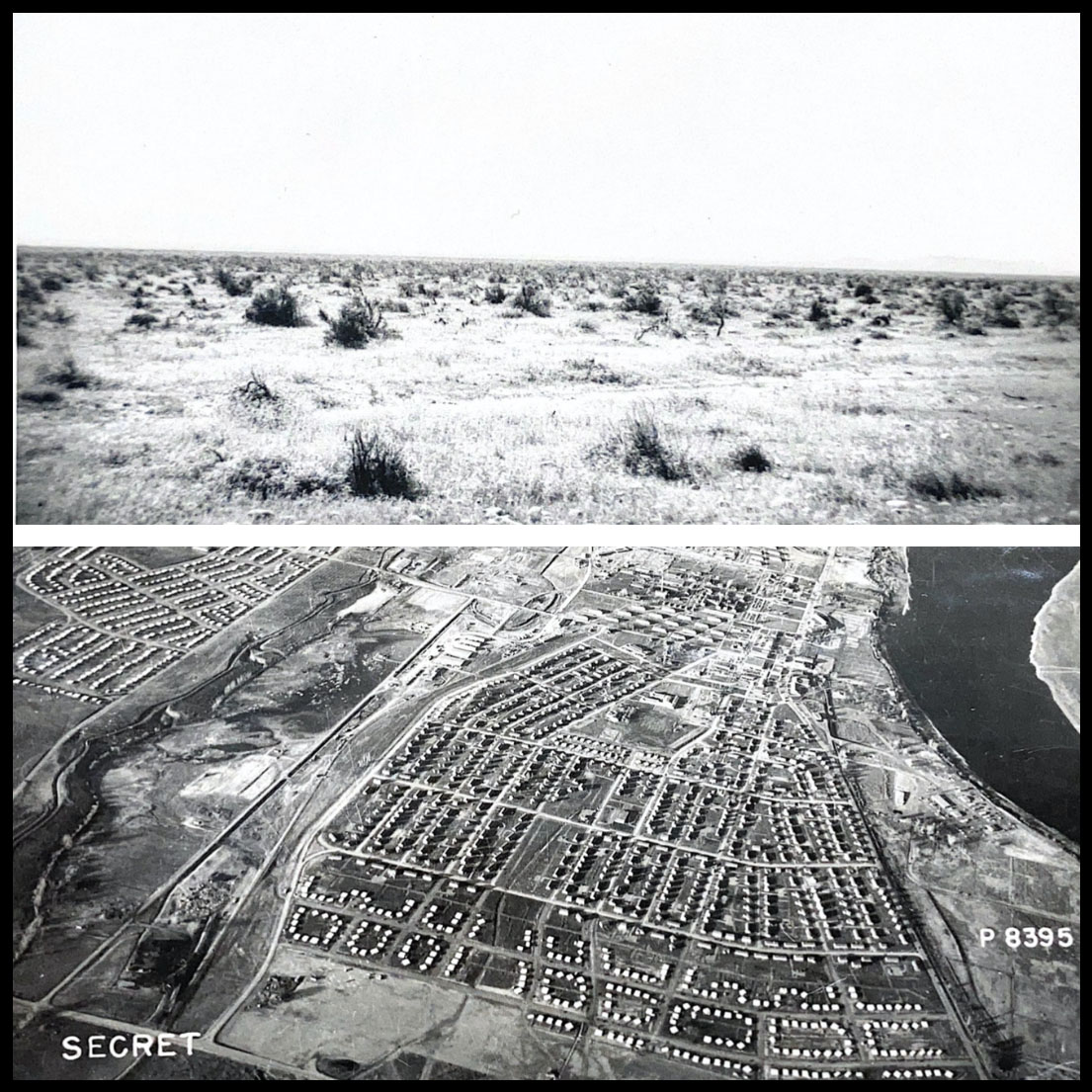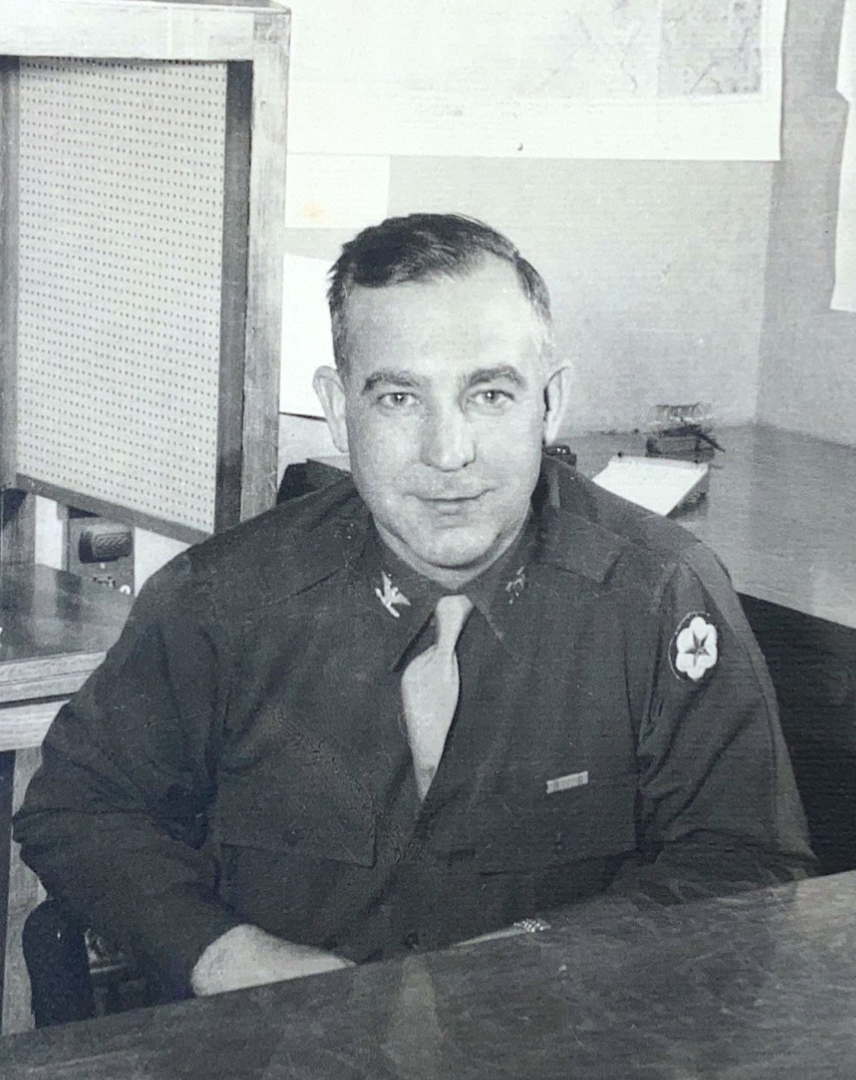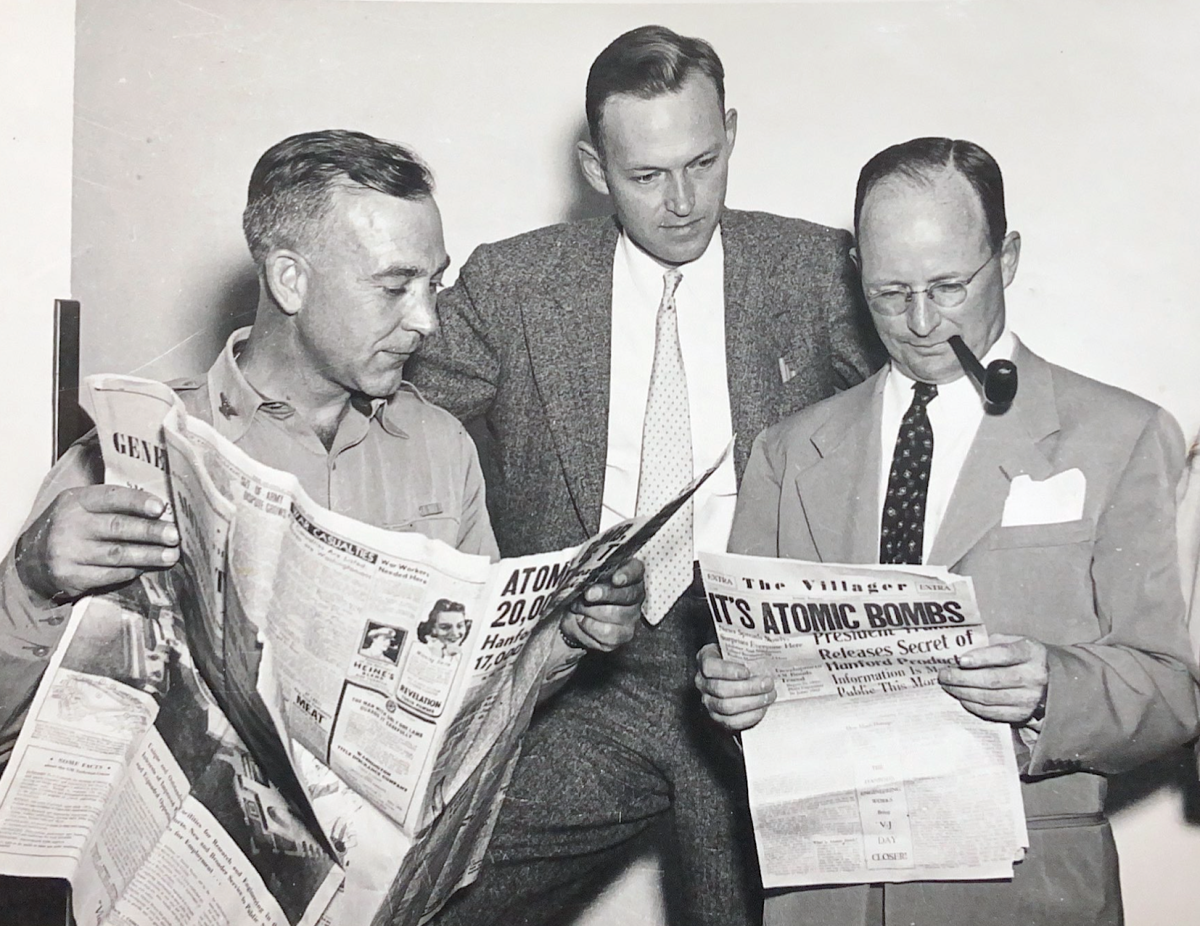From the small window of the plane flying over Washington state, Franklin “Frank” T. Matthias (1908-1993) watched as a swath of desert dotted with small bushes passed beneath him. The Columbia River carved its path through rocks and sand, appearing defiantly blue amidst a landscape of muted colors. The Grand Coulee Dam, which had been producing hydroelectric power for nearly two years, was visible in the distance, gleaming in the bright winter sun.
We can never know the exact thoughts Matthias and his companions shared on that plane ride over Hanford, Washington, in December of 1942. But we do know that when the group returned to Washington, D.C., they recommended the site to General Leslie Groves, United States Army Corps of Engineers officer, with full confidence. Just three months later, under the leadership of Frank Matthias, Hanford transformed from a rocky desert into the home of six nuclear reactors, a vast construction site, and a sprawling company town built for tens of thousands of workers and their families, all helping to build the world’s first atomic weapon.

Frank Matthias served as commanding officer and area engineer of Hanford Engineer Works from 1943 to 1945. During this time, he directed the development of the town of Richland as well as the production of U-235 plutonium at Hanford. At the peak of Manhattan Project activity, Matthias oversaw roughly 45,000 workers.
Writing to all Hanford Engineer Works employees in December 1944, Matthias reflected on the time that had passed since the start of World War II, saying: “This Christmas will be our fourth Christmas at war; our second Christmas at Hanford.” He continued by praying “that next Christmas we may be back in our homes with our servicemen and women, our families reunited, the war only a memory, and our efforts concentrated on making our own country and our own community a better place to live.”[1]

A little over six months since Hanford-Richland residents read Matthias’ words, the world’s first atomic bomb, created with plutonium from Hanford, was successfully detonated in the desert of New Mexico under the code name “Trinity.” Less than a month later, the United States dropped two atomic bombs on Japan: first on the city of Hiroshima and then on the city of Nagasaki, leading to the surrender of the Japanese army. Matthias’ prayer had been answered—by Christmas of 1945, Hanford Engineer Works employees were able to return to their respective homes and reflect on the knowledge that they had ushered in the nuclear age.

The Franklin T. Matthias photographs collection documents the construction of Hanford Engineer Works and Richland Village between 1943 and 1945. Researchers interested in World War II, the Manhattan Project, industrial chemistry, nuclear energy, and company towns may be interested in this collection.
[1] F. T. Matthias, Col., C. E., Area Engineer. “TO ALL H.E.W. EMPLOYEES.” The Sage Sentinel: Published Weekly by H.E.W. Employees Association. Not To Be Mailed or Taken From the Area, December 22, 1944.
Peyton Cleary is a summer intern with the Audiovisual and Digital Initiatives Department. She is a History MA student at the University of Delaware and served the Manuscripts and Archives Department as a Graduate Assistant during the 2021-2022 school year.
